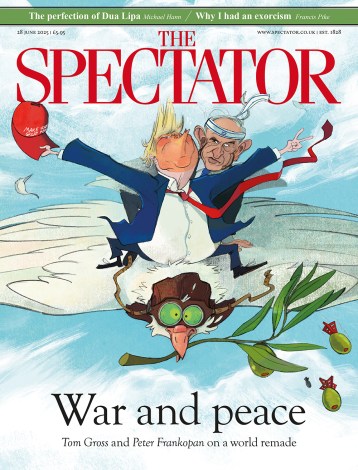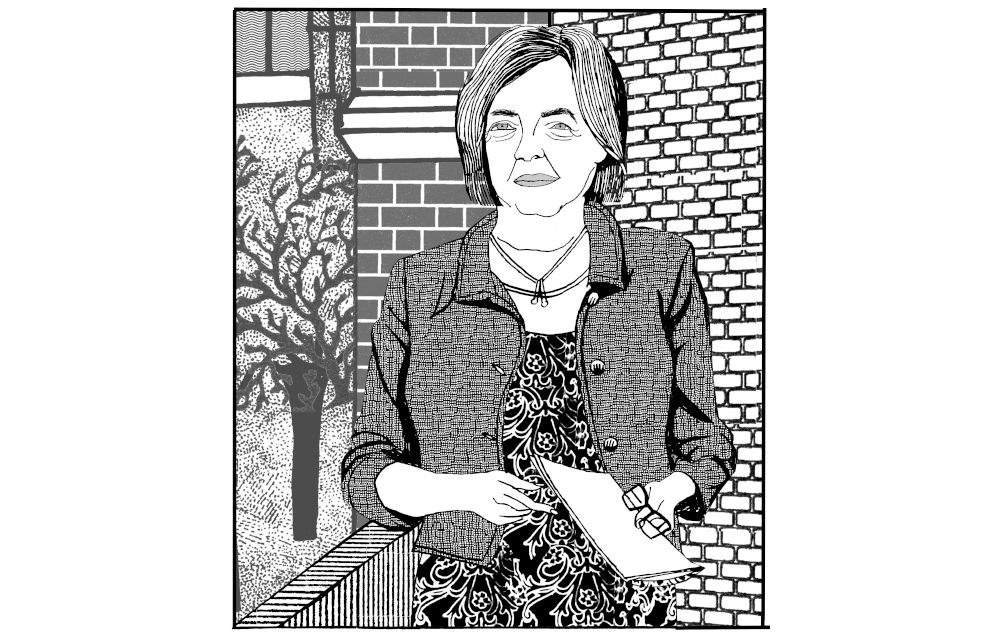At 8.30 a.m. each morning, Keir Starmer holds a meeting with his inner circle to go over the business of the day. Once, these meetings were mainly filled with unelected aides, but now they are attended by senior shadow ministers, such as Labour’s campaign co-ordinator and Blairite old-timer Pat McFadden or the shadow cabinet office minister and Brown-ite Jonathan Ashworth. Starmer’s deputy, Angela Rayner, may drop in too. If Rachel Reeves can’t make it, one of her shadow treasury aides goes in her place.
The new setup is one of the many measures Sue Gray has brought in since she was appointed Starmer’s chief of staff a year ago. Her aim is to strengthen ties between the Labour leader and his shadow cabinet. She has also reached out to Labour’s regional mayors who had been the subject of vicious briefings by Starmer’s aides. The fact that London mayor Sadiq Khan and the new First Minister of Wales, Vaughan Gething, attended shadow cabinet this week is a sign of improved relations. Her goal is to ensure that once Starmer is in power his standing in the party will be strong enough to endure the turbulence of office.
Her work is already dividing opinion. There are ongoing reports of a rift between her and Starmer’s male-heavy team, referred to dismissively by female members of shadow cabinet as ‘the boys’. ‘Sue is definitely more of a good thing than a bad thing, but it would be lying to say there haven’t been teething issues,’ says a shadow minister.
As prime minister, Gordon Brown said Gray was his go-to woman for help in a crisis
Gray’s critics see her as a civil service automaton who knows little about politics and even less about the Labour party. Some blame her for making Starmer slow-footed on key announcements, such as the painfully delayed decision to ditch the £28 billion green spending pledge. ‘But it’s unfair to blame Sue for that,’ says one member of the shadow cabinet. ‘She wanted to make sure relevant shadow ministers were on board, so the line would hold’.
Her supporters argue that she provides a much-needed voice of experience, since she has worked in the departments of transport, health and work and pensions, and that she receives unfair flak for dismantling a cabal that had succeeded in keeping the front bench out of the conversation for too long. ‘She’s been transformative in ways of working,’ says a shadow minister.
As prime minister, Gordon Brown said Gray was his go-to woman for help in a crisis. When Oliver Letwin was David Cameron’s chief aide, he once described his surprise in discovering, upon entering government, that ‘our great United Kingdom is actually entirely run by a lady called Sue Gray’.
Gray stunned and infuriated Tories when she resigned as one of the most senior civil servants in the Cabinet Office shortly after completing the partygate report into allegations of lockdown rule breaking in Boris Johnson’s Downing Street. But an important job vacancy had come up. She could be to Starmer what Jonathan Powell had been to Tony Blair and David Wolfson had been to Margaret Thatcher. The relationship between a prime minister and his or her chief of staff is one of the most important in politics. It has to be founded on a shared vision. Both Starmer and Gray agree that Labour, out of power for 13 years, needed to be rewired if the party was to be ready for office. They also share a love of Northern Ireland, where they both worked for the civil service. Starmer was a human rights adviser to its new police force in the 2000s and Gray worked in the Northern Ireland Executive.
The daughter of Irish immigrants who in the 1950s moved to Tottenham, Gray took a surprise early career break from the civil service in the 1980s to run a pub, the Cove Bar, near the Irish border. She has denied that she worked as a spy (‘Since when would someone who has worked in intelligence say yes?’ asks a party figure). Her son Liam Conlon, now a Labour candidate, has spoken of how a relative was a victim of the Ballymurphy massacre in August 1971, one of the worst atrocities of the Troubles.
‘She is really good at building empires and making connections. She’ll want her own base,’ says a former colleague
Gray joined Whitehall straight from school, choosing not to go to university following the sudden death of her father. ‘She started at the bottom and crawled up by her fingernails,’ says an acquaintance. Gray had supporters – she got on well with Antonia Romeo, now permanent secretary at the Justice Department, and Olly Robbins, the onetime Brexit negotiator who is also tipped for a role under Starmer – but she was never one of the boys. She’s described as having a good sense of humour (‘She looks stern in photos but is very warm in person’), being sociable (‘she’s no monk’) and being attached to her phone (‘not sure she sleeps much’).
To some, the only surprising aspect of her move to the Labour party was that it took so long. ‘It was said that Ed [Miliband] had asked her to be chief of staff in 2010 before he went with Tim Livesey. So her political leanings aren’t a huge surprise,’ says a Whitehall figure.
If she does end up in No. 10, it’s unlikely she’ll work well with Simon Case, who was made civil service chief by Johnson. They do not, in the words of a civil servant, ‘click’. Many expect Case to jump before being pushed. There’s a rumour that Case’s predecessor the late Jeremy Heywood was also wary about Gray. ‘They thought about getting rid of her,’ recalls one old-timer, ‘then decided she knew where too many bodies were buried.’ Her former colleagues have memories of her having ‘quite a chip on her shoulder about Oxbridge generally’. ‘She was always talking about diversity – particularly more women in roles,’ one adds.
While Labour initially cheered Gray’s recruitment, government aides were quick to question whether Starmer’s team knew quite what they were getting into. ‘You know that show “Better Call Saul”, in Whitehall it was “Better Call Sue”,’ says a former government aide of her ability to solve tricky problems. ‘She’s a street fighter and fixer of sorts,’ adds a former colleague. ‘She is really good at building empires and making connections. She’ll want her own base.’ Her base, so far, includes several shadow cabinet members. She has especially hit it off with Angela Rayner. One new colleague says Gray offers a masterclass in how to ‘manage upwards’.
Both critics and admirers say her skill is being able to ‘speak human’, then translate it into action the civil service understands. In Whitehall, there is a joke that her answer to any problem is a ‘chat’. When faced with a tricky situation, ‘Chatty Sue’, as some former colleagues call her, would ‘sink into the sofa and use persuasion to get things done’. Such tactics were on display when Gray was spotted near the Speaker’s office on the day Keir Starmer took the opportunity of a ‘chat’ to convince Lindsay Hoyle to overturn convention to allow a Labour amendment on the tricky Gaza ceasefire vote.
There is anxiety in parts of Starmer’s circle about where her tactics might take the party. Her work preparing Labour for government is purposely being kept separate from the election campaign preparations, which are led by Starmer’s longstanding aide Morgan McSweeney. This means that many don’t know what Gray is planning – even though she will play a crucial role in appointing people in a Starmer-led Downing Street. ‘There is a lot of concern that the people who have slaved away in opposition won’t make the cut,’ says one such aide.
As for what a Gray/Starmer No. 10 would look like, Gray has told colleagues that the Lib-Con coalition is the best to learn from. She wants to move away from ‘government by WhatsApp’. She is looking at how to make mission-led government work, tying departments together with common aims.
Gray’s challenge after the general election will not just be to make a Starmer government work, but to make sure she doesn’t make too many enemies in the process. ‘A lot of my colleagues have made a judgment before she has had a chance to prove herself,’ says one Labour aide. ‘Her real job is just keeping things together until the election and surviving a lot of weird factional shit. But once she’s done that and is in No. 10, she’ll be in her natural territory and running rings around everyone.’







Comments